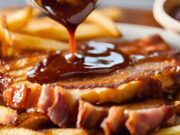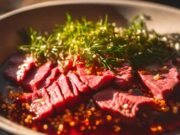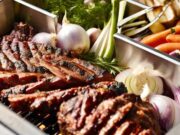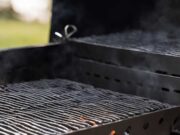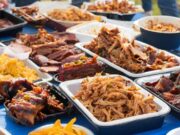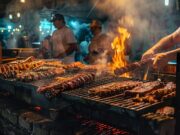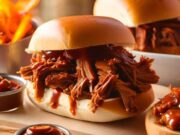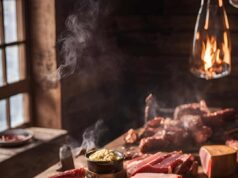Grilling season has arrived, and while the enticing aroma of meat on the barbecue is hard to resist, prioritizing safety is essential.
This guide serves as your comprehensive resource for ensuring a secure and enjoyable cookout experience. You will find valuable insights on selecting the ideal grilling location, mastering grill maintenance, and implementing crucial food safety practices.
Explore these tips to ensure your BBQ remains both enjoyable and hazard-free, allowing you to grill with confidence and safety.
Key Takeaways:
- Always stay attentive while grilling and avoid distractions to prevent accidents.
- Keep a safe perimeter around the grill, especially with children and pets, to prevent any mishaps.
- Practice proper food safety techniques and be aware of cooking temperatures to prevent foodborne illnesses.
The Ultimate Guide to BBQ Safety: Tips for a Safe and Enjoyable Cookout
Barbecuing or grilling is a cherished tradition during the summer months, particularly in locations like Hawaii, where families come together for cookouts to enjoy delicious food and create lasting memories.
While grilling can be a fun and enjoyable activity, it is important to acknowledge the inherent risks involved, including fire hazards and foodborne illnesses that can arise from improper food handling practices.
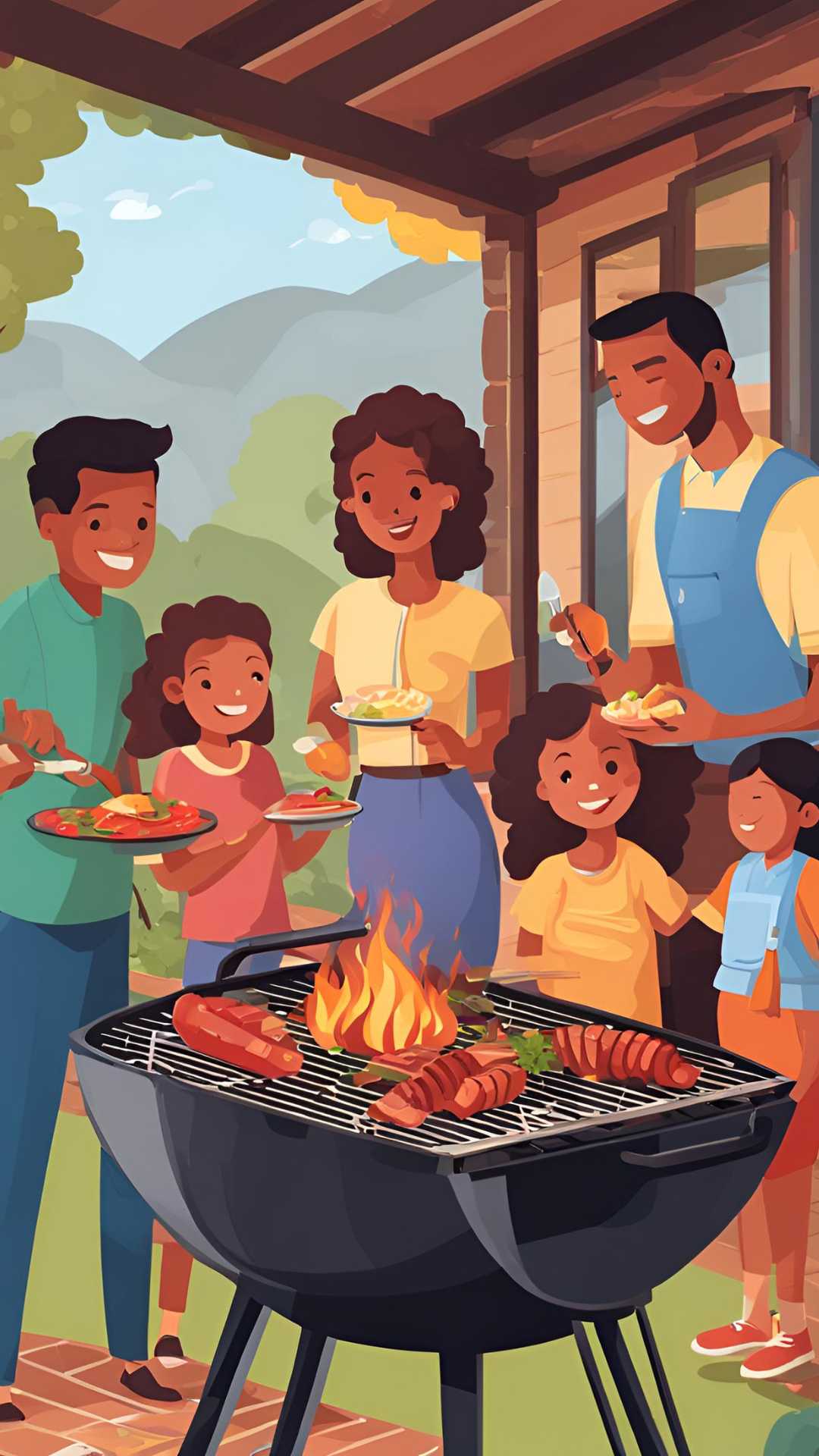
To ensure a safe and enjoyable barbecue experience, it is essential to adhere to proper BBQ safety tips and food safety guidelines. By doing so, you can minimize the risks associated with grilling and ensure that children, pets, and guests can all participate in the festivities without any accidents or emergencies.
Understanding the Importance of Safe Grilling
Understanding the significance of safe grilling is essential, as it involves various aspects such as preventing accidental injuries, ensuring food safety, and minimizing fire risks while enjoying an outdoor cookout with family and friends.
As a grilling enthusiast, it is important to be aware of the practices that contribute to a safe cooking environment. Implementing adequate food safety measures, such as properly marinating and storing meats at the appropriate temperatures, is vital in preventing foodborne illnesses.
Before using grilling equipment, inspecting it for defects or potential hazards, such as gas leaks or damaged hoses, can be extremely beneficial. Maintaining a safe distance from flammable materials and having a fire extinguisher readily available are also prudent steps to take.
By taking these precautions seriously, you can fully enjoy your outdoor gatherings without the concern of accidents or health risks.
Preparation: Getting Ready for a Safe Cookout
Preparation is essential for ensuring a safe cookout, as it involves several critical steps. You should inspect your grilling equipment thoroughly and maintain high standards of hygiene and cleanliness.
These measures are vital for preventing accidents and ensuring food safety throughout the event.
Choosing the Right Location for Your Grill
Choosing the right location for your grill is essential for preventing fire hazards and ensuring the safety of everyone at the cookout. Placing the grill too close to flammable materials or structures can lead to serious accidents.
It is crucial to consider factors such as wind direction, as this can affect how flames or smoke behave and potentially compromise safety. Ensuring that the grill is set up at a safe distance from wooden decks, trees, and outdoor furniture is important. Additionally, having easy access to the grill for both cooking and emergency situations is vital; this includes keeping fire extinguishers nearby and selecting a flat surface to stabilize the grill.
By understanding and implementing these safety precautions, you can create a secure and enjoyable grilling experience for all participants.
Preparing Your Grill: Cleaning and Maintenance
Properly preparing your grill by focusing on cleaning and maintenance is critical for enhancing food safety and reducing fire risks, ensuring that your cookout is both enjoyable and safe for all participants.
To effectively maintain the grill, you should begin by thoroughly inspecting the appliance before each cooking session. Look for signs of wear and tear, especially in the hoses and burners, which are essential for safe operation.
After the inspection, the next step is to remove any debris, such as charred food remnants and grease buildup, which can lead to flare-ups. Utilize a sturdy brush designed for your specific grill type to ensure a thorough cleaning.
Additionally, ensure that all cooking utensils are properly sanitized to prevent cross-contamination of food. By diligently following these practices, you can significantly elevate the grilling experience while prioritizing safety.
Understanding Fuel Safety: Gas vs Charcoal
Understanding fuel safety is crucial for BBQ enthusiasts. It involves knowing the differences between gas and charcoal grills and recognizing the flammable materials associated with each, ultimately ensuring a safer grilling experience.
Choosing between gas and charcoal grills can often feel overwhelming, but comprehending the associated risks and benefits will assist you in making a well-informed decision. Gas grills offer convenience and precision with temperature control, which many find appealing, while charcoal grills are revered for delivering that classic smoky flavor.
Safety concerns arise with both types of grills. For gas grills, it’s essential to regularly check for leaks and ensure proper ventilation, as well as to manage propane cylinders carefully to avoid accidents. Meanwhile, charcoal grilling demands attention to fire management and requires proper extinguishing methods to maintain a safe cooking environment.
Balancing these considerations will help you enjoy outdoor cooking while minimizing risks.
Grilling Safety Tips
Regarding grilling, adhering to essential safety tips can significantly reduce risks, ensuring that your outdoor grilling experience is both enjoyable and safe.
This approach protects both your guests and your culinary creations from potential accidents.
01 | Stay Attentive: Avoid Distractions While Grilling
Staying attentive while grilling is paramount, as distractions can lead to accidents, undercooked food, or even barbecue fires that endanger everyone at the cookout.
It’s all too easy to get sidetracked by a phone call, a ringing doorbell, or the excitement of friends arriving. However, giving in to these distractions can have serious implications. For instance, losing focus for even a moment can result in an unevenly cooked meal, which not only affects the taste but could also pose health risks if the food is not cooked to the appropriate temperature.
An unattended grill can easily ignite, especially if there are flammable materials nearby or if grease accumulates. To ensure a safe and enjoyable grilling experience for everyone involved, it is crucial to maintain awareness and stay vigilant, keeping the focus on both the food and the fire.
02 | Create a Safe Perimeter: Keep Kids and Pets Away
Creating a safe perimeter around the grill is essential for ensuring the safety of children and pets during a cookout. This precaution prevents them from inadvertently getting too close to the heat source or hot surfaces, which could result in serious injuries.
To achieve this, one effective strategy is to establish clear physical barriers, such as portable fencing or designated seating areas that delineate the grilling zone from play areas. It is also crucial to communicate expectations with guests, specifically instructing them to maintain a respectful distance from the grill while food is being prepared. Utilizing visual cues like cones or signs can further reinforce this boundary.
Additionally, designating a responsible adult to oversee the grilling area can enhance supervision, ensuring that everyone is aware of safety protocols. By implementing these strategies, you foster a safer environment, allowing everyone to relax and enjoy the gathering without concern.
03 | Fire Safety: Know How to Use a Fire Extinguisher
Fire safety is a critical aspect of grilling, and understanding how to properly use a fire extinguisher can greatly impact your ability to manage any emergencies that may arise during your cookout.
It is essential for you to be prepared with the right tools and procedures to protect yourself, your guests, and your property. When grilling, consider having a Class K fire extinguisher on hand, as it is specifically designed for cooking-related fires, particularly those involving oils and fats. If a Class K extinguisher is not available, a multi-purpose Class ABC extinguisher can also be effective. Always keep a fire extinguisher nearby, and make sure that everyone is aware of its location and how to use it.
If there is a fire, prioritize safety: turn off the grill and avoid using water to extinguish the flames, as this could worsen the situation. Instead, smother the flames with a blanket or use the extinguisher, aiming at the base of the fire. Awareness and preparedness can significantly enhance fire safety during your grilling activities.
04 | Follow the User Manual: Know Your Grill
Following the user manual and understanding the operating instructions for your grill is essential for safe grilling. This practice ensures proper usage and maintenance, thereby minimizing risks and enhancing your cooking experience.
Every grill, whether it is gas, charcoal, or electric, has its own set of operational guidelines tailored to its specific characteristics. Familiarity with these guidelines not only promotes safety by highlighting necessary precautions—such as checking for gas leaks or ensuring proper ventilation—but also boosts efficiency. By understanding these instructions, you can learn how to achieve the perfect sear or smoky flavor.
Consulting the manual aids in grasping the optimal temperatures and cooking times for various foods, ensuring delicious results each time. Therefore, taking a few moments to review this invaluable resource can lead to a significantly more rewarding grilling experience.
Food Safety Practices for BBQ
Implementing food safety practices during BBQs is essential for preventing foodborne illnesses and ensuring that all guests can enjoy the delicious food without health risks. This underscores the importance of maintaining hygiene and employing proper food handling techniques.
Preventing Bacteria: Safe Food Handling Techniques
Preventing bacteria during BBQs necessitates strict adherence to safe food handling techniques, which are crucial for maintaining food safety and minimizing the risk of foodborne illness among guests.
One important aspect is to ensure that all cooking utensils, such as knives and cutting boards, are thoroughly cleaned before and after use to prevent cross-contamination. Additionally, proper storage temperatures must be maintained: perishable items like meat should be kept below 40°F, and cooked dishes should not be left out for more than two hours at room temperature.
When thawing frozen food, it is essential to do so in the refrigerator, in cold water, or in the microwave, but never at room temperature, as this can encourage bacterial growth.
Furthermore, marinades should be handled with care; they should only be used on raw meat and never reused without being cooked first, ensuring the health and safety of everyone enjoying the outdoor gathering.
Understanding Cooking Temperatures: How to Cook Food Properly
Understanding cooking temperatures is crucial for BBQ safety. By using a thermometer to ensure that food reaches the appropriate temperature, you can prevent foodborne illnesses and guarantee that everyone enjoys safe and delicious meals.
This practice not only enhances the culinary experience but also boosts your confidence as a host, ensuring that you are serving properly cooked meats. For example, ground beef should reach an internal temperature of 160°F, while poultry must be cooked to a safe 165°F. As grilling enthusiasts gather around the BBQ, it is essential to remember that pork chops require an internal temperature of at least 145°F.
To ensure accurate results, it is important to insert the thermometer into the thickest part of the meat, taking care to avoid any bones. By following these guidelines, you can master the art of outdoor cooking while prioritizing food safety.
Frequently Asked Questions
What are some basic safety tips for a BBQ cookout?
Some basic safety tips include keeping a fire extinguisher nearby, using long-handled utensils, and never leaving the grill unattended.
How can I prevent food poisoning at a BBQ cookout?
To prevent food poisoning, make sure to cook all meat and poultry to the correct temperature, keep raw and cooked foods separate, and wash your hands frequently while handling food.
What should I do if a grease fire occurs during a BBQ cookout?
If a grease fire occurs, turn off the grill and cover it with a lid to cut off the oxygen supply. Never use water to put out a grease fire as it can make it worse. If the fire is out of control, call 911.
Can I use the same cutting board for raw and cooked meat at a BBQ cookout?
No, it is important to use separate cutting boards for raw and cooked meat to avoid cross-contamination. Use one cutting board for raw meat and another for cooked meat or vegetables.
What should I do if someone gets burned at a BBQ cookout?
If someone gets a minor burn, run it under cool water for at least 10-15 minutes and cover it with a clean bandage. If the burn is severe, seek medical attention immediately.
Are there any safety precautions I should take when using a propane grill?
Yes, always check for gas leaks by applying soapy water to the gas tank and connections. If bubbles appear, there is a leak. Also, make sure the grill is at least 10 feet away from any flammable materials.








